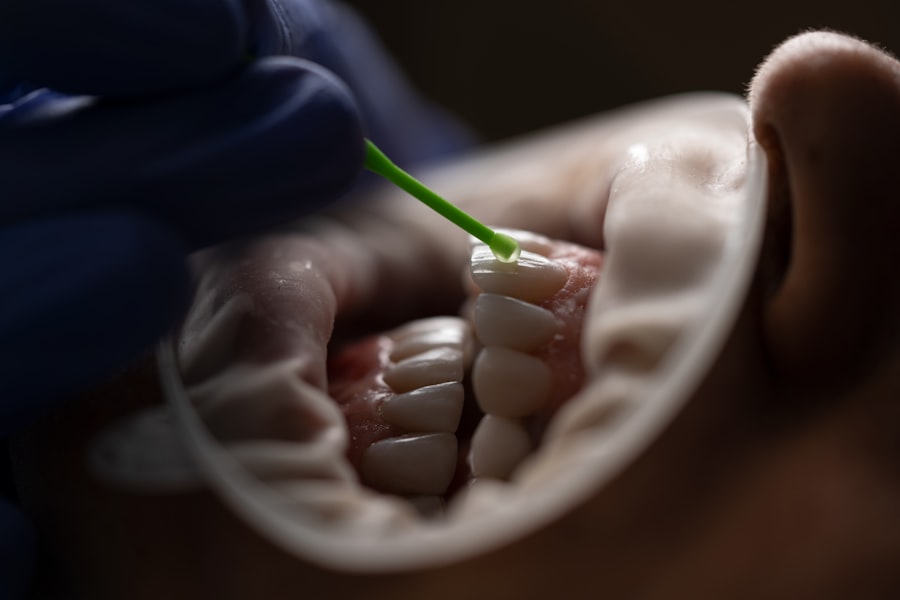
Orthodontists are dental specialists who focus on diagnosing, preventing, and treating dental and facial irregularities. Their primary goal is to ensure that patients achieve optimal oral health and a harmonious smile through the use of braces, aligners, and other orthodontic appliances. Unlike general dentists, orthodontists undergo additional years of specialized training after dental school, which equips them with the skills necessary to address complex issues related to tooth alignment and jaw positioning.
This expertise allows them to create customized treatment plans that cater to the unique needs of each patient, whether they are children, teenagers, or adults. The field of orthodontics is not only about aesthetics; it also plays a crucial role in improving overall oral health. Misaligned teeth can lead to various dental problems, including tooth decay, gum disease, and difficulties in chewing or speaking.
By correcting these issues, orthodontists contribute significantly to enhancing their patients’ quality of life. The demand for orthodontic services has been on the rise, driven by increased awareness of dental health and the growing popularity of cosmetic dentistry. As a result, orthodontists are becoming an integral part of the healthcare system, providing essential services that go beyond mere cosmetic enhancements.
Key Takeaways
- Orthodontists are dental specialists who focus on the alignment of teeth and jaws to improve oral health and aesthetics.
- The job outlook for orthodontists is very positive, with a projected growth rate of 10% from 2020 to 2030, much faster than the average for all occupations.
- Becoming an orthodontist requires a bachelor’s degree, completion of dental school, and 2-3 years of specialized orthodontic training.
- The top paying locations for orthodontists in the USA include New Hampshire, Alaska, and Wisconsin, with average annual salaries exceeding 0,000.
- Orthodontists enjoy a competitive salary range, excellent benefits, and the opportunity to work in private practice, hospitals, or academic settings.
Job Outlook and Growth
The job outlook for orthodontists is exceptionally promising, with projections indicating robust growth in the coming years. According to the U.S. Bureau of Labor Statistics (BLS), employment opportunities for orthodontists are expected to grow by approximately 7% from 2021 to 2031, which is faster than the average for all occupations.
This growth can be attributed to several factors, including an aging population that requires dental care and an increasing emphasis on preventive care and aesthetic treatments. As more individuals seek orthodontic treatment to improve their smiles and overall dental health, the demand for qualified orthodontists will continue to rise. Moreover, advancements in technology have revolutionized the field of orthodontics, leading to more efficient treatment options and improved patient outcomes.
Innovations such as 3D imaging, digital scanning, and clear aligner systems have made it easier for orthodontists to provide personalized care. These technological advancements not only enhance the patient experience but also streamline practice operations, allowing orthodontists to serve a larger patient base. As a result, those entering the field can expect a dynamic work environment with ample opportunities for professional growth and development.
Education and Training

Becoming an orthodontist requires a significant commitment to education and training. The journey typically begins with earning a bachelor’s degree, followed by completing a dental degree from an accredited dental school. Dental programs usually take four years to complete and cover a wide range of subjects, including anatomy, physiology, pharmacology, and dental ethics.
After obtaining a Doctor of Dental Surgery (DDS) or Doctor of Dental Medicine (DMD) degree, aspiring orthodontists must then pursue additional specialized training in orthodontics. Orthodontic residency programs typically last an additional two to three years and provide in-depth training in various aspects of orthodontics, including biomechanics, craniofacial growth and development, and treatment planning. During this time, residents gain hands-on experience working with patients under the supervision of experienced orthodontists.
Upon completion of their residency, graduates must pass a rigorous examination administered by the American Board of Orthodontics (ABO) to become board-certified orthodontists. This certification not only demonstrates their expertise but also enhances their credibility in the eyes of patients and peers alike.
Top Paying Locations in the USA
| Rank | Location | Average Annual Salary |
|---|---|---|
| 1 | San Jose, California | 120,000 |
| 2 | San Francisco, California | 110,000 |
| 3 | New York City, New York | 105,000 |
| 4 | Boston, Massachusetts | 100,000 |
| 5 | Los Angeles, California | 95,000 |
The salary of orthodontists can vary significantly based on geographic location, with certain areas offering higher compensation due to demand and cost of living factors. According to recent data from the BLS, states such as California, New York, and Texas consistently rank among the top-paying locations for orthodontists. In California, for instance, the average annual salary for orthodontists can exceed $300,000, driven by a large population and a high demand for cosmetic dental services.
In addition to these states, metropolitan areas such as San Francisco, Los Angeles, and New York City also offer lucrative opportunities for orthodontists. The high concentration of dental practices in urban centers often leads to increased competition for patients, which can drive up salaries as practices strive to attract top talent. Furthermore, regions with a higher cost of living typically offer higher salaries to offset expenses.
For example, while salaries may be lower in rural areas due to less demand for specialized services, urban environments tend to provide more opportunities for growth and higher earnings.
Salary Range and Benefits
The salary range for orthodontists is among the highest in the healthcare profession. According to the BLS, the median annual wage for orthodontists was approximately $228,780 as of May 2021. However, many orthodontists earn significantly more than this figure, with top earners bringing in well over $300,000 annually.
Factors influencing salary include years of experience, geographic location, type of practice (private practice versus group practice), and patient volume. In addition to competitive salaries, orthodontists often enjoy a comprehensive benefits package that may include health insurance, retirement plans, paid time off, and continuing education allowances. Many orthodontists also have the opportunity to participate in profit-sharing arrangements or bonuses based on practice performance.
These benefits not only enhance job satisfaction but also contribute to long-term financial security. The combination of high earning potential and attractive benefits makes orthodontics an appealing career choice for those interested in dentistry.
Job Responsibilities and Duties

Diagnosis and Treatment Planning
Their primary duties include conducting thorough examinations of patients’ teeth and jaws to diagnose malocclusions or other dental irregularities. This process often involves taking X-rays and creating treatment plans tailored to each patient’s specific needs.
Treatment Implementation and Monitoring
Once a diagnosis is made, orthodontists develop a comprehensive treatment strategy that may include traditional braces, clear aligners like Invisalign, or other corrective devices.
This involves regular follow-up appointments where adjustments are made to appliances as necessary and progress is assessed.
Patient Education and Collaboration
Orthodontists must also educate patients about proper oral hygiene practices during treatment to ensure optimal results. Furthermore, they often collaborate with other dental professionals—such as general dentists and oral surgeons—to provide comprehensive care for patients with complex dental issues.
Career Advancement Opportunities
The field of orthodontics offers numerous avenues for career advancement beyond clinical practice. Many orthodontists choose to specialize further by pursuing fellowships in areas such as craniofacial orthopedics or dentofacial orthopedics. These additional qualifications can enhance their expertise and open doors to specialized practices that cater to specific patient populations or complex cases.
Moreover, experienced orthodontists may take on leadership roles within their practices or professional organizations. They might become involved in teaching at dental schools or conducting research in orthodontic techniques and technologies. Additionally, some orthodontists choose to establish their own practices or partner with other specialists to create multidisciplinary clinics that offer comprehensive care under one roof.
These opportunities not only allow for professional growth but also enable orthodontists to make significant contributions to the field through mentorship and innovation.
Orthodontists as Top Paying Jobs in the USA
Orthodontics stands out as one of the most rewarding professions within the healthcare sector due to its combination of high earning potential, job stability, and opportunities for personal fulfillment through patient care. The rigorous education and training required to become an orthodontist prepare individuals for a dynamic career that is both challenging and gratifying. As demand for orthodontic services continues to grow alongside advancements in technology and an increasing focus on aesthetic dentistry, those entering this field can expect a bright future filled with opportunities for growth and success.
The profession not only offers financial rewards but also allows practitioners to make meaningful impacts on their patients’ lives by enhancing their smiles and improving their overall oral health. With a strong job outlook projected over the next decade and numerous avenues for career advancement available, orthodontics remains an attractive option for aspiring dental professionals seeking a fulfilling career path that combines science with artistry.
According to a recent study by Careers in the USA, Orthodontists are among the highest paying occupations in the United States.
The article highlights the lucrative nature of the orthodontic profession and the potential for financial success in this field. For more information on high-paying occupations in the USA, visit Careers in the USA.
FAQs
What is the average salary of an orthodontist in the USA?
The average salary of an orthodontist in the USA is around $230,830 per year, according to the Bureau of Labor Statistics.
What are the educational requirements to become an orthodontist?
To become an orthodontist, one must complete a bachelor’s degree, followed by a dental school program to earn a Doctor of Dental Surgery (DDS) or Doctor of Dental Medicine (DMD) degree. After dental school, orthodontists must complete an additional 2-3 years of specialized training in orthodontics.
What are some of the highest paying occupations in the USA?
Aside from orthodontists, some of the highest paying occupations in the USA include surgeons, anesthesiologists, obstetricians and gynecologists, and psychiatrists.
What factors contribute to the high salary of orthodontists?
The high salary of orthodontists can be attributed to the specialized nature of their work, the extensive education and training required, and the demand for orthodontic services in the population. Additionally, orthodontists often have their own private practices, which can contribute to higher earnings.






